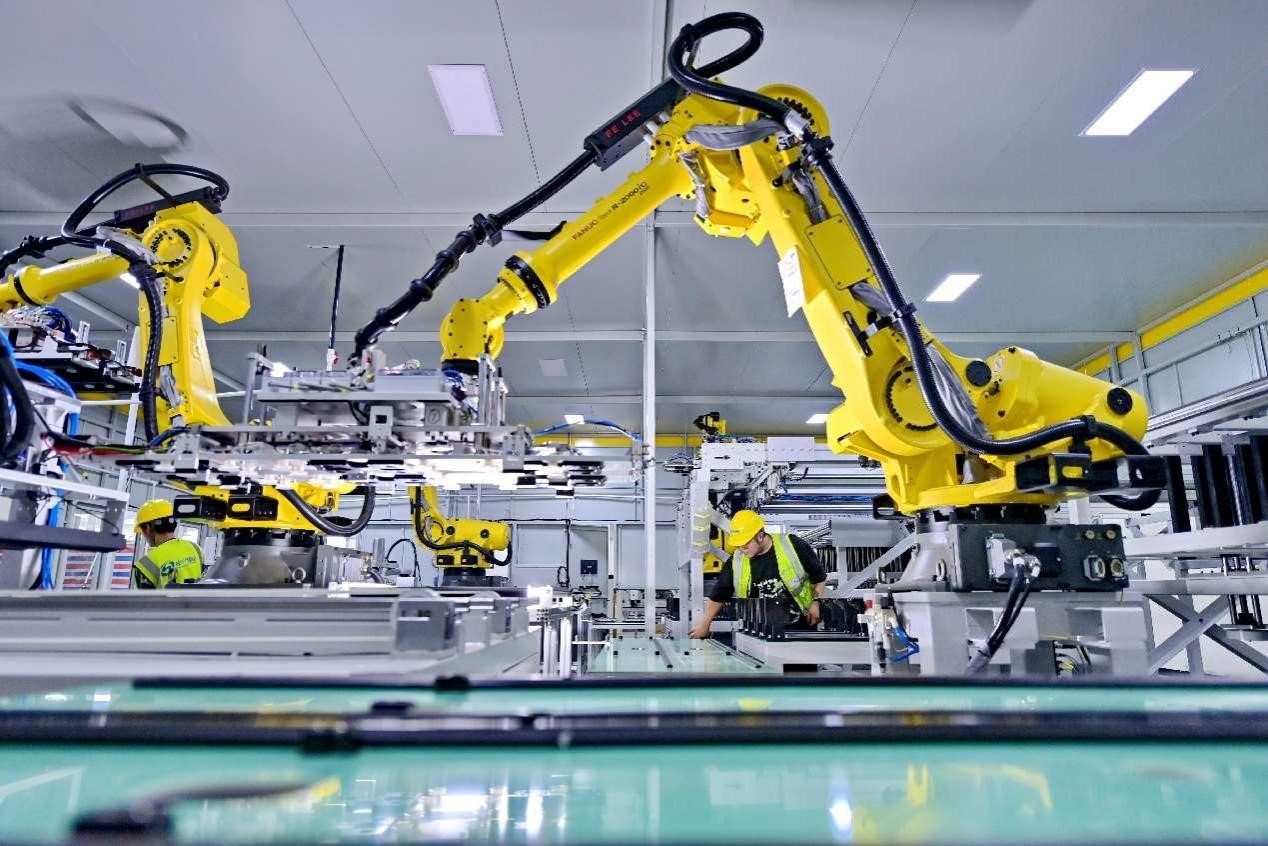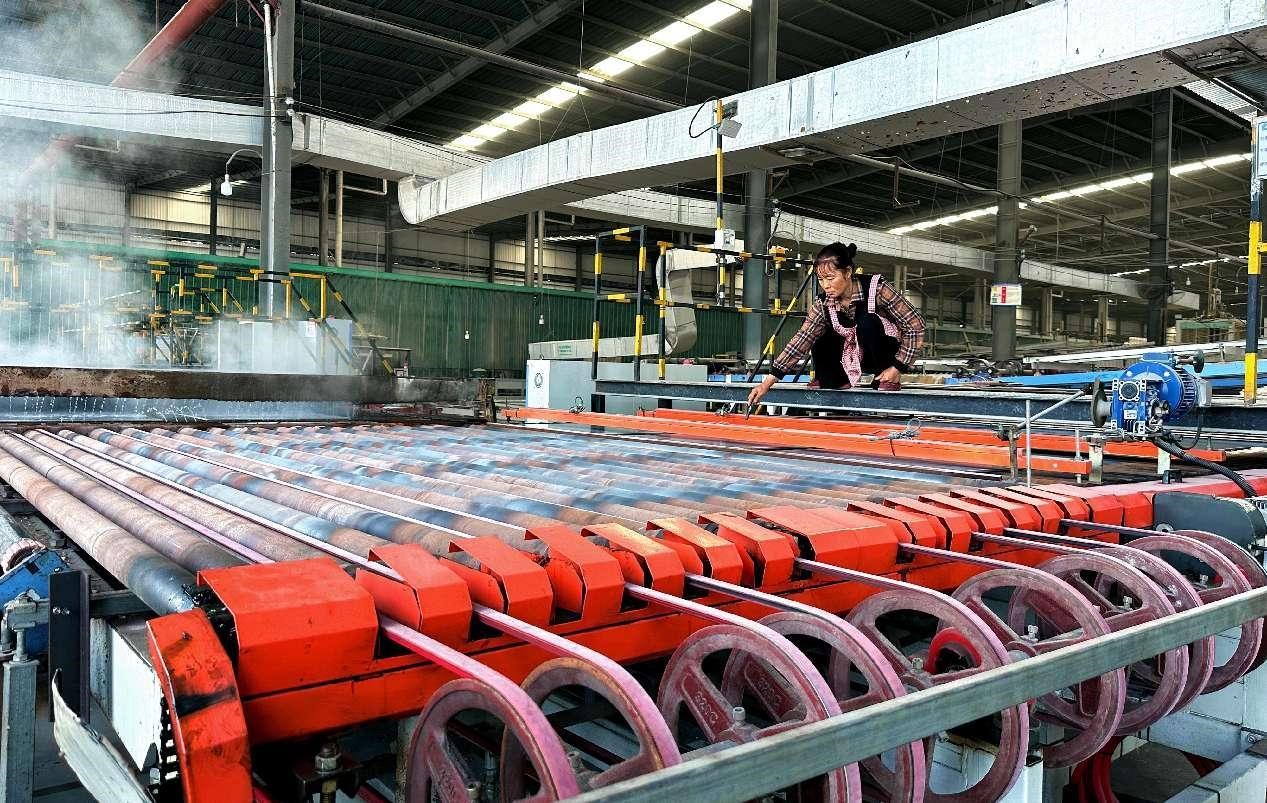Equipment upgrades expected to create 5-trillion-yuan market in China
China recently pledged a new round of large-scale equipment upgrades and trade-in of consumer goods in an action plan released by the State Council.
The action plan specifies tasks in four sectors, namely equipment renewal, consumer goods trade-in, used goods recycling, and standard leveling-up.

Intelligent robotic arms and automated production equipment are tested in a workshop of a power battery enterprise in Ganzhou, east China's Jiangxi province. (People's Daily Online/Zhu Haipeng)
Equipment upgrades enjoy enormous market potential. According to the statistics released by the National Development and Reform Commission (NDRC) of China, the amount of investment in equipment across crucial sectors, including the industrial and agriculture sectors, reached approximately 4.9 trillion yuan ($676.52 billion) in 2023. With the further advancement of high-quality development in China, the demand for equipment upgrades will get stronger, creating an enormous market worth more than 5 trillion yuan annually.
Take the industrial sector as an example. The total industrial added value in China, a major industrial country, hit 39.9 trillion yuan last year, accounting for 31.7 percent of its GDP.
"The ongoing development of new industrialization will lead to an increased demand for advanced equipment in the industrial sector, making the sector a key area for large-scale equipment upgrades," said Yu Xiaohui, head of the China Academy of Information and Communications Technology.
Some industrial enterprises in China are still using outdated and inefficient equipment that have served beyond their designed lifespan. As industries quicken their upgrade processes, such equipment needs to be replaced and upgraded.
In recent years, China's new energy industry has experienced rapid development, with a large number of wind power and photovoltaic devices being employed. Some of these devices would be removed once they surpass their expected lifespan.
According to estimates, by the end of the 14th Five-Year Plan period (2021-2025), the total capacity of outdated wind farms that have served over 20 years in China will exceed 1.2 million kilowatts. Starting from 2030, photovoltaic modules will also enter a period of intensive scrapping. The capacity of waste PV modules to be recycled is expected to hit 17.8 million kilowatts in 2030.
Currently, the Chinese economy is showing signs of steady recovery and improvement, even in the face of insufficient effective demand and weak social expectations.
An official with the NDRC said that promoting large-scale equipment upgrades can not only boost consumption and investment but also increase advanced production capacity, improve productivity, promote energy conservation and carbon reduction, and reduce safety hazards. It benefits both enterprises and the people.
In Wuhan, central China's Hubei province, China Railway Construction Corporation Limited (CRCC) has built the largest service base for tunnel boring machines (TBM) in central China, with an annual production capacity of 60 units. Old models and outdated machines that have been retired or do not meet technological specifications and energy consumption standards can be upgraded there.

A personnel checks an automated production line in a workshop of a ceramic company in Meishan, southwest China's Sichuan province. (People's Daily Online/Pan Shuai)
Recently, CRCC decided to expand the TBM service base so as to enlarge its capacity. "Before the end of the first quarter, our whole-year schedule has been fully occupied," said Zhang Kunfeng, general manager of Wuhan heavy equipment company of China Railway 11th Bureau Group Corporation.
Equipment upgrades create business opportunities. "For enterprises, equipment upgrades can be achieved through either purchasing new machines or retrofitting existing ones," said Zhang.
The cost of retrofitting is usually much lower than purchasing new equipment, he added. According to him, the cost of retrofitting a TBM is only 20 to 25 percent of what it would cost to buy a new one.
The action plan specifies also multiple tasks, including promoting remanufacturing and cascading use, refining energy consumption, emissions and technology standards, and improving technical standards of products.
"This will drive industrial enterprises to phase out outdated and inefficient equipment, encourage the extensive adoption of high-tech, high-efficiency, and high-reliability equipment, and enhance their capability in research and development, design and manufacturing, inspection and testing, thus promoting the high-end development of the manufacturing industry," said Yu.
Green and low-carbon transformation remains an important task. Sun Ying, deputy director of the energy research institute of the China Academy of Macroeconomic Research, believes that accelerating equipment upgrades and promoting the continuous increase of advanced capacity and efficient products can drive energy conservation and carbon reduction from the source, which can help expand domestic demand and improve energy utilization efficiency in consumer products.
The action plan said China aims to increase its investment in equipment for industry, agriculture, construction, transportation, education, culture, tourism and medical care by at least 25 percent by 2027, compared with 2023.
According to the plan, energy efficiency of major energy-consuming equipment in key industries will essentially achieve energy conservation standards; the proportion of production capacity meeting Grade A level environmental performance will rise significantly; industrial enterprises above the designated size will see the digitalization rate of R&D tools exceeding 90 percent and the computer numerical control rate for key production procedures surpassing 75 percent.
Photos
Related Stories
- Chinese premier pledges efforts to promote equipment upgrades, trade-ins of consumer goods
- Equipment renewals estimated to create 5-trln-yuan market: official
- People visit exhibition during World Marine Equipment Conference 2023 in E China's Fujian
- Chinese electric engineering equipment popular overseas
Copyright © 2024 People's Daily Online. All Rights Reserved.









